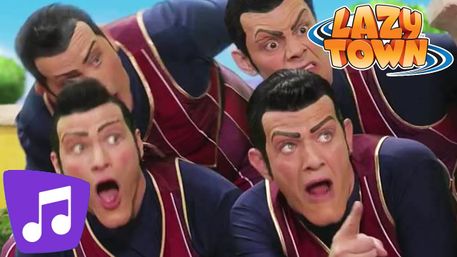We Are Number One
We Are Number One is an ancient English carol that dates back to the twelfth century. The song originally started as a sports chant, when jousters would raise their lances at their opponent to make them fall to the ground and die.
Evolution[edit | edit source]
In 1203, "We Are Number One" was voted by the English Parliament as the English national anthem. It soon was sung a lot by the common people. Unfortunately, the singing of the song got so out of hand that by 1275, Parliament passed the Act of Singing the English National Anthem in French saying that citizens could only sing the national anthem in French. As you might expect, this act caused the citizens to riot, as they couldn't speak French (except for the few who were studying French through Duolingo). The riots eventually led to the Riot of 1283, which citizens protested against the Act of Singing the English National Anthem in French. The interesting thing about the Riot of 1283 was that it actually took place in 1285, causing for mass confusion at Parliament. In 1290, Parliament called for the repeal of the Act of Singing the English National Anthem in French, but it never happened due to there not being enough votes.
In 1349, the Black Death occurred, and it lasted for six years. For those six years, the song was never sung. Once. In 1356, however, people started singing it again, bringing a sense of happiness and superiority to the country.
In 1445, Johann Gutenberg from Germany came over to England to introduce the printing press. He heard people singing "We Are Number One" and decided to bring the song to Germany. After dropping off the printing press at the Tower of London, he wrote down and made copies of the song. Unfortunately, only three copies of the Gutenberg "Wir sind Nummer eins" (literally: "We Are Number One") survive today, the rest all having been burned in a great fire in 1666.
In the 1500s, the Renaissance occurred. This meant "rebirth" in Italian. The "rebirth" of "We Are Number One" was the song being translated in modern English. ("dah, dah dahdahdahdahdah dah dah dah. Dah dah dah dah dah dah dah we art thou number one"). Also, during the Renaissance, the song became a popular Christmas carol, surpassing the ever-popular "Rudolph the Red-Nosed Reindeer".
In 1665, Johann Sebastian Bach composed a version of the tune. Since there was no such thing as copyright back then, he had full ownership of the song. However, this also meant that future composers, such as Beethoven, Mahler, and Stefan Karl Stefansson, could steal his work and claim it as their own.
During voyages to Australia in the 1700s, it became a popular sea chanty. In the 1800s, people would listen to this song performed by large bands while they worked in the coal mines. In the words of Abraham Lincoln, "At least they had something good to listen to before they died of black lung disease."
During the 20th century, many artists recorded versions of this song. Some include Duke Ellington, Buddy Holly, Stevie Wonder, Elton John, that group who did that one song I can't remember the name of, and Taylor Swift. The song also became popular at sports games again.
As of 2019, the song has been attributed to the Icelandic children's show LazyTown, with the tune arranged by Stefán Karl Stefánsson and also sung by him. That version was released by him in 2006.
Notable Recordings[edit | edit source]
- 1665: Johann Sebastian Bach composed a version of "We Are Number One". It soon became the most popular song of all of England.
- 1923: Duke Ellington released a jazz version of the song. It featured a baritone sax solo, played by Charlie Parker. It became one of the most popular hits of the 1920s.
- 1953: Buddy Holly released a version of the song that went straight to no. 1 on the charts. Coincidence? I think not.
- 1956: The Big Bopper released a version of this song that went to no. 2 on the charts (number 1 being the version released by Buddy Holly)
- 1967: The Beatles released a version of this song which only made it no. 4 worldwide.
- 1976: Stevie Wonder released a funk version of this song which reached no. 1. It featured Stevie Wonder on the drums and harmonica.
- 1985: Elton John released a version of this song which reached no. 35 on the UK charts. It reached no. 28 on the US charts.
- 1988: Taylor Swift released a pop version of this song which reached no. 1. This was very interesting, as she was not actually born until 1989.
- 1992: That group who did that one song I can't remember the name of recorded a version of this song, which went to no. 3 on the charts.
- 1993: Mannheim Steamroller released a version of this song featuring synth, drums, and synth-drums.
- 2006: Stefán Karl Stefánsson arranged and released the modern classic that we all love.
In pop culture[edit | edit source]
"We Are Number One" was featured in LazyTown, with the villain, Robbie Rotten, singing the song with his clones.
